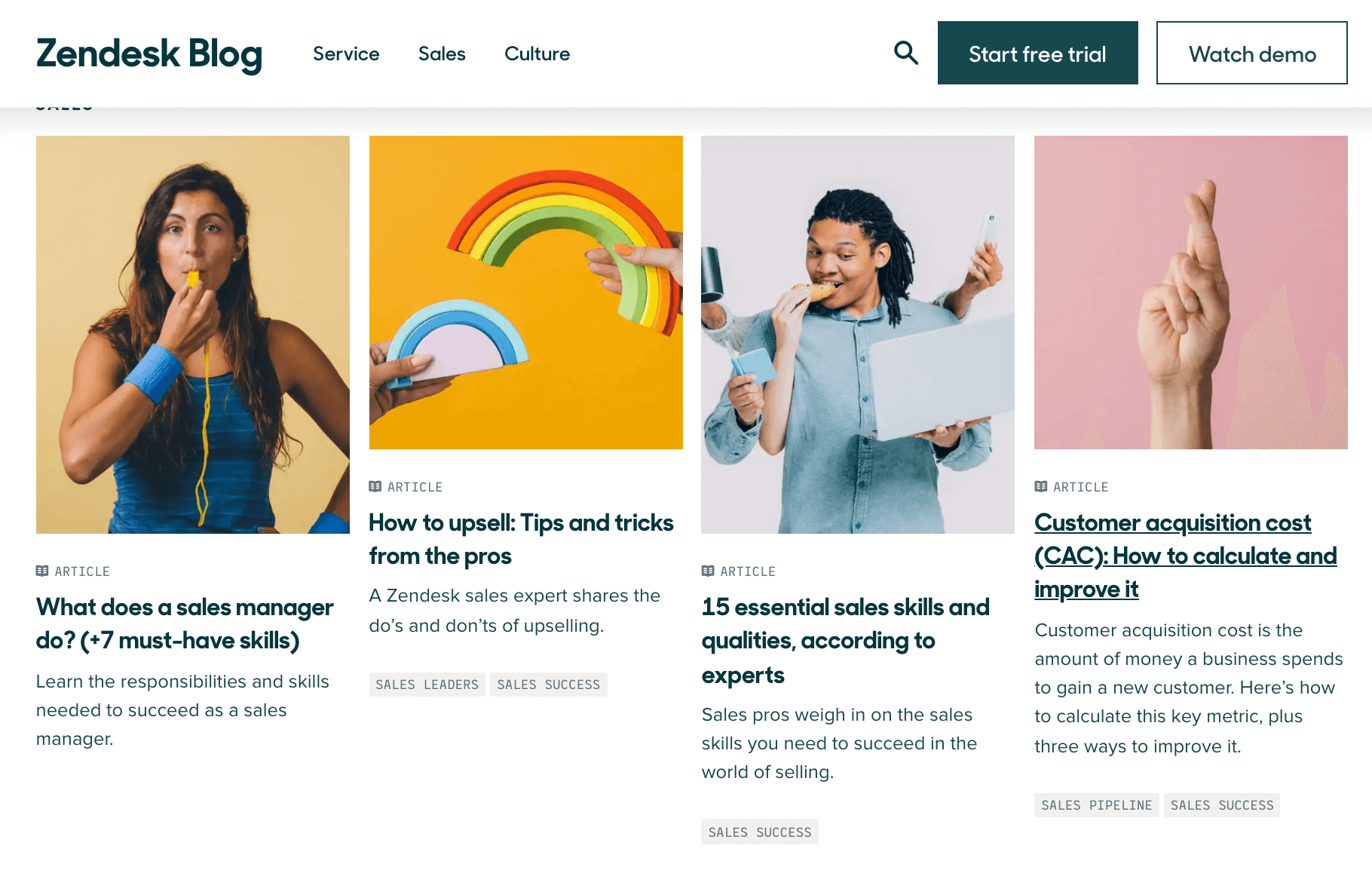How do you get attention for your brand? How do you become a trusted resource to your audience? How do you build brand loyalty? Spoiler: You don’t do it by talking about yourself.
Interruption marketing has been eclipsed by engagement marketing in recent years—and for good reason. Pestering people with ads that talk about how great you are, obnoxiously pushing your product on people, or creating overly branded content that doesn’t provide true value is not the way to build a community of lifelong fans. The only way to do it is by meaningfully engaging with people, getting to know them, and giving them what they need. The good news is you can do this through content marketing—if you know what you’re doing.

5 Tips to Gain Brand Loyalty
Whether you need some fresh inspiration or a total content strategy realignment, here are 5 tips to help you improve your content, create a community of fans, and build the brand loyalty you deserve.
1) Talk about the things your audience cares about.
No one cares about you until they have a reason to. Talking about yourself is not interesting to anyone. But talking about your audience’s interests, needs, wants, etc. is a surefire way to grab their attention, immediately prove that you “get” them, and nudge them down the path to purchase—one helpful article, infographic, e-book, or demo at a time.
Think about how your content benefits your audience. Do they learn something? Do they solve a problem? Are they entertained? It’s these moments that make you stand out (and make them want to return to you).
Tip: If you’re not sure what their pain points are, go old school and have real, human conversations. Leverage your people (e.g., account reps) to get inside their minds. (This is especially important in B2B marketing, where these types of relationships are the bedrock of business.)
For more tips, find out how to deliver value in every piece of content, use our template to map your buyer journey, and try these prompts to brainstorm value-centric ideas.
Example: Wistia is a video-hosting platform that creates a ton of helpful content to help their audience do everything related to video. A simple tutorial to create a DIY laptop telemprompter is the type of practical, helpful content that serves their audience.
2) Tell your brand story—not stories about your brand.
Brand storytelling is powerful in marketing. But when we talk about brand storytelling, people often misinterpret the phrase as “endlessly talking about your brand.” Thus, it’s not surprising that so much content marketing is self-indulgent or navel-gazing.
Instead, think about the stories you’re telling through your content. Do you share your failures (and your lessons learned) to help others avoid the same? That humility is part of your brand story. Do you dig into your data to find interesting insights to share with industry publications? That transparency is part of your brand story. Do you create innovative products? The people who create them are part of your brand story.
The stories you choose to tell massively influence how people perceive your brand, so make sure you’re telling the right stories through your content.
Tip: Find out why brand storytelling matters, try our tips to tell your brand story, and see how these 15 creative brands do it.
Example: Zendesk is a platform dedicated to improving customer relationships, but the stories they tell go beyond empowering customer service professionals. From articles on the importance of workplace wellness to helpful webinars, they prove they’re dedicated to creating better businesses—beyond customer service.

3) Invite people to share their stories.
Want to create community? Three words, baby: user-generated content. Savvy content marketers don’t talk about their brand—they let other people do it for them. With user-generated content, you can not only engage your audience but celebrate them and make them a part of your brand story.
Note: When we talk about UGC, we’re not just talking testimonials on your site. We’re talking contests, quizzes, surveys, accounts takeovers—all sorts of creative and exciting ways to welcome your larger community into your story. Not only does this tactic let you fill your content pipeline but it makes people feel like they’re a part of your community. The more you can build that community, the more brand loyalty you’ll cultivate.
Tip: If you need more inspiration, here are 11 types of user-generated content you can create now.
Example: KFC created the #KFCSecretMenuHacks on TikTok to encourage users to share their favorite KFC menu hacks. It’s a smart way to promote and highlight people’s personal preferences.
@kentuckyfriedchicken ? ? ? @Jen Curley #KFCSecretMenuHacks #KFC ♬ Secret Menu – KFC Hack Pack
4) Let people behind the curtain.
If you want people to like you, you can’t tell them who you are. You need to show them. From your supply chain to your company parties, there are all sorts of ways to let your audience behind the scenes to cultivate a more intimate relationship.
Ultimately, transparency is the key to building trust—with a variety of audiences. Remember: You’re not only selling to customers. The content you create and the way you present yourself to the world says a lot about who you are as a business, as a leader in your industry, and as an employer.
Tip: See our guide to showcase your culture, and download our employer brand toolkit to make sure you’re telling interesting stories about who you really are.
Example: Hubspot has an entire Instagram account dedicated to their people and culture—the perfect place to showcase the faces behind the brand.
View this post on Instagram
5) Nurture your relationship—after you sell.
Your existing customers are your biggest asset, but marketers are focused on getting new people in the door. But your audience’s needs and wants don’t diminish the minute they buy your product or use your service. In fact, now that they’ve crossed that threshold, you can go deeper and give them that next level of attention.
Tip: There are all sorts of ways to build brand loyalty and engage people after they become a customer. Fun welcome emails, gifts, guides, tutorials, surveys, etc. help you keep your relationship strong.
Example: For the holidays, we often create a gift (such as custom playing cards) influenced by one of our company values. Not only does this gesture help strengthen our relationship but the story behind the gift helps us share more deeply about the way our brand works/what we believe.

How to Make Your Marketing More Effective
Good marketing stems from good strategy. If you want to strengthen your operation and improve your ROI, here are a few more things you can do to get the results you want.
- Create a cohesive brand experience. Start by revisiting your brand strategy to make sure your content (and business practices) are aligned to your values.
- Make sure your content is consistent. To create a strong brand presence, you need a strong identity. Follow our tips to keep your content on brand, and download our brand identity toolkit to build a visual identity that is instantly recognizable.
- Master content creation. Find out how to optimize your infrastructure to create high-quality content at scale.
But if you’re short on bandwidth, you might need a few extra hands on deck. If you’re thinking about bringing in some expert help, find out what you should look for in a content marketing agency, learn about how we work through a content strategy, or reach out. We’d love to help you build your community.





